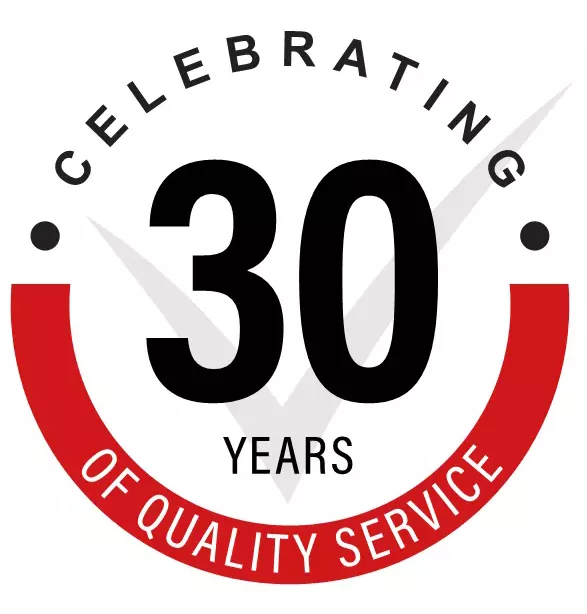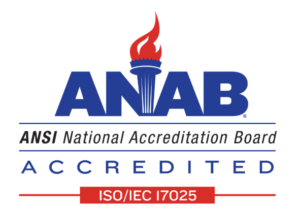X-Ray Diffraction (XRD) is a powerful and versatile technique used to identify, characterize, and quantify the crystalline phases in a material. It is a non-destructive form of testing that can analyze the structure, composition, and properties of materials down to the atomic level. XRD is used in a variety of industries, from pharmaceutical companies to automotive manufacturers.
XRD testing can be used for many applications, from uncovering unknown synthesized materials to determining the size, shape, and orientation of crystal lattices. XRD is also used in research laboratories to study the molecular and crystalline structure of compounds, which can be used to help design new materials.
There are many advantages to using XRD, which makes it a valuable tool for researchers and industry professionals alike. Even though XRD is a sophisticated technique: Its accuracy and capability to analyze samples quickly make it one of the most widely used testing methods around the world. This article will discuss the different aspects of XRD, including what it is, how it works, and the advantages and applications of using this testing method.
What is X-Ray Diffraction Testing?
XRD testing, sometimes called x-ray diffraction analysis or powder diffraction, is a PMI method of material characterization that uses X-ray beams to study the structure of crystalline materials. The technique works by shining X-rays through a sample, which then produces an interference pattern. This pattern is then used to determine the structure of the material.
The XRD pattern consists of angles and intensities that can provide information about the material’s composition, crystallinity, atomic structure, and other properties. As a result, XRD is a powerful tool for analyzing a wide range of materials.
One of the reasons that XRD is a preferred metal analyzing method is that it is non-destructive, meaning samples remain intact throughout the analysis. Materials like diamonds and graphite can be safely studied with this technique without causing any damage.
While XRD is a sophisticated technique, it is relatively simple to use and can quickly provide detailed information about a sample. X-rays are commonly associated with the medical field for imaging human bones, but XRD has many applications in other industries.
In addition to being used for research and development, XRD is also used in industrial production facilities for quality control purposes. It can be used to identify phases in a material, as well as quantify the amounts of different phases present in a sample. XRD is also commonly used to identify unknown materials and to analyze the properties of a material.
How Does XRD Work?
XRD testing focuses an X-ray beam on a metal sample to determine its composition and a few structural elements (such as average grain size, crystal defects, orientation, and strain).
The X-ray beam scatters off the sample in a process known as diffraction. This results in an interference pattern that is very distinctive for each material and provides information about the structure of the sample. Determining the diffraction pattern requires both mathematical calculations and physical measurements.
The resulting interference patterns are then analyzed to identify the crystalline structure of the sample, which can provide information about the composition and properties of the material. With this technique, it is possible to identify the presence of different elements and phases in a material, as well as measure their relative amounts.
XRD Advantages
The advantages of XRD testing are numerous. In addition to being non-destructive, the technique is fast and reliable. It can provide detailed information about a sample in a relatively short amount of time, making it ideal for use in industrial settings.
It is also capable of detecting both elemental and structural information about a material, allowing for an understanding of the material’s properties. XRD can also be used to study a variety of materials, making it versatile and useful in a variety of settings.
Finally, XRD is cost-effective compared to other testing methods and can provide detailed information in a single analysis. Overall, X-ray diffraction is an extremely powerful and versatile tool that can be used to analyze a variety of materials.
It can provide detailed information about a material’s composition and structure, allowing for an understanding of its properties. Whether used in research or production settings, XRD is a valuable tool for gaining insights into the structure and composition of metals.
XRD Applications
XRD has a variety of applications in many different industries. It can be used to study materials for research and development purposes, as well as for industrial production and quality control.
It is commonly used to identify unknown materials, quantify the amounts of different phases present in a sample, and characterize the properties of a material. XRD can also be used to measure grain size, identify phases, detect defects, and analyze strain in a material.
Additionally, XRD can be used to identify and monitor stress corrosion cracking, which is an important factor in failure analysis. Finally, XRD is often used in the semiconductor industry for inspecting thin-film layers and analyzing crystal defects.
By utilizing XRD, materials can be analyzed quickly, accurately, and cost-effectively, allowing for an understanding of their properties and composition.
This can help in the development of new materials, as well as the optimization of existing ones. An expert XRD testing laboratory can provide detailed analysis and data interpretation, helping to ensure that materials are developed or used correctly.
Do You Need XRD Analysis?
X-ray diffraction is an invaluable analytical tool that can provide detailed information about a material’s composition, structure, and properties. If you need to understand more about material for research and development, industrial production, or quality control purposes, then XRD analysis may be the answer.
With its non-destructive, fast, and reliable nature, XRD can provide detailed information in a single analysis. An expert XRD testing laboratory can provide detailed analysis and data interpretation that can help to ensure that materials are developed or used correctly.
If you have questions about XRD analysis or other types of testing, we can help you understand the right solution for your needs. We can help you determine if it makes sense to purchase a machine or simply have testing conducted at an experienced, third-party laboratory.
No matter what your application, we have the expertise to help you find the best solution for your needs. Contact us today to learn more about XRD and other types of material analysis.



 OES MAINTENANCE & CALIBRATION:
OES MAINTENANCE & CALIBRATION: